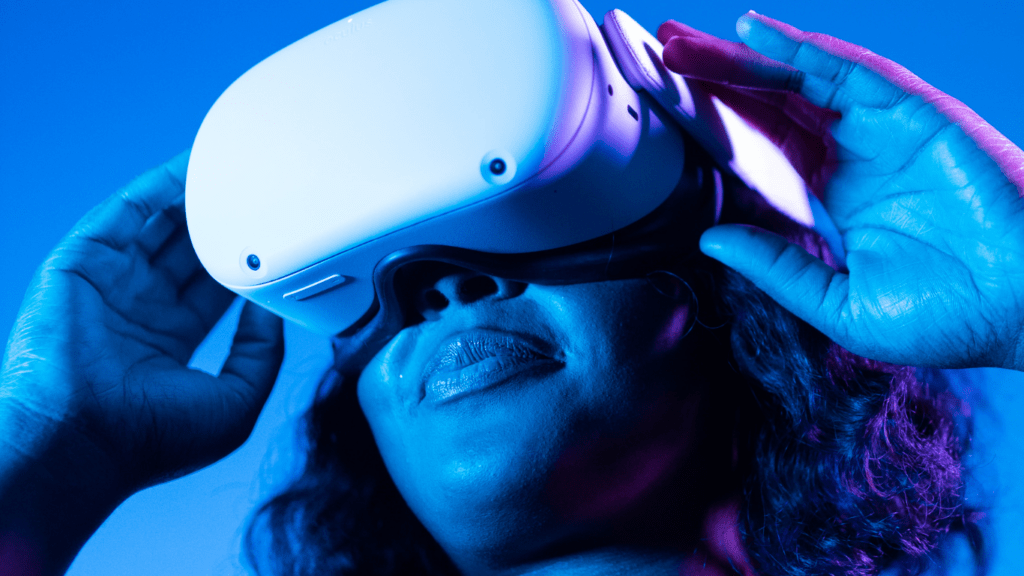Immersive technologies like Augmented Reality (AR) and Virtual Reality (VR) are revolutionizing the way we engage with the digital world. As an avid explorer of cutting-edge innovations, I’ve witnessed firsthand the transformative power of AR and VR in enhancing online interactions and experiences. These technologies blur the lines between the physical and digital realms, offering users a new dimension of engagement and immersion.
In this article, I’ll delve into the impact of AR and VR on online interactions, highlighting their ability to create lifelike simulations and interactive environments. From virtual meetings to immersive gaming experiences, AR and VR are reshaping the way we connect and engage online. Join me as we explore the endless possibilities that AR and VR bring to the digital landscape, transforming the way we interact and experience the online world.
Exploring the Impact of AR and VR
Immersive technologies like Augmented Reality (AR) and Virtual Reality (VR) have revolutionized online interactions by bridging the gap between physical and digital worlds. These technologies redefine how we engage with the digital realm, offering enhanced experiences that push the boundaries of traditional online interactions.
- Redefining Online Experiences
AR and VR technologies redefine online experiences by providing immersive simulations that transport users to virtual environments.
These technologies create interactive spaces for virtual meetings, training sessions, and entertainment, offering a level of engagement that was previously unattainable. - Enhancing User Engagement
AR and VR enhance user engagement by offering interactive and dynamic experiences that capture users’ attention and foster deeper connections.
Through lifelike simulations and personalized interactions, users can explore virtual worlds and engage with content in a way that feels natural and intuitive. - Transforming Communication
AR and VR transform communication in online interactions by enabling real-time collaboration and shared experiences in virtual environments.
These technologies facilitate more engaging and impactful communication, whether in virtual meetings, remote team collaborations, or interactive gaming experiences. - Creating New Possibilities
AR and VR unlock a realm of possibilities for online interactions, offering innovative solutions for education, entertainment, training, and beyond.
The limitless potential of AR and VR presents new opportunities for businesses and individuals to connect, create, and collaborate in ways that were once unimaginable.
By harnessing the transformative power of AR and VR, online interactions are evolving into immersive and engaging experiences that blur the lines between the physical and digital worlds. The impact of these technologies extends beyond novelty, paving the way for a future where the boundaries of online interactions are redefined and expanded.
Advantages of AR and VR in Online Interactions
Augmented Reality (AR) and Virtual Reality (VR) offer numerous advantages in enhancing online interactions and experiences.
Enhanced User Engagement
Immersive technologies like AR and VR elevate user engagement to new heights. By providing realistic and interactive simulations, these technologies captivate users’ attention and create memorable experiences. For instance, in virtual meetings, participants can feel as though they are physically present in the same room, fostering deeper connections and increasing collaboration.
Interactive Learning Opportunities
AR and VR revolutionize online education by offering interactive learning opportunities. Students can engage with digital content in a hands-on manner, making learning more experiential and impactful. For example, in virtual training sessions, employees can practice real-life scenarios in a safe and controlled environment, enhancing their skills and knowledge effectively.
Implementing AR and VR in Online Experiences

Implementing Augmented Reality (AR) and Virtual Reality (VR) technologies in online experiences revolutionizes user engagement and interaction dynamics. AR and VR merge physical and digital environments, creating immersive simulations for various online activities.
In virtual meetings, AR and VR technologies enhance user engagement by providing lifelike experiences, making participants feel as if they are present in the same physical space. For instance, virtual meeting platforms can simulate conference rooms or interactive environments, allowing seamless communication and collaboration among remote participants.
In online training sessions, AR and VR offer realistic simulations that enable hands-on learning experiences. These simulations can mimic real-world scenarios, providing learners with practical training opportunities in a safe and controlled virtual environment. By immersing users in interactive learning environments, AR and VR enhance knowledge retention and skill development.
Moreover, in the realm of online entertainment, AR and VR experiences transport users to immersive virtual worlds, offering unprecedented levels of engagement and entertainment. From virtual reality gaming to interactive storytelling experiences, these technologies redefine online entertainment by blurring the line between the physical and digital realms.
By leveraging AR and VR technologies in online education, institutions can provide students with interactive learning opportunities that transcend traditional classroom boundaries. Through virtual laboratories, simulations, and field trips, learners can gain practical insights and experiences that enhance their understanding of complex concepts and theories.
Overall, the implementation of AR and VR in online experiences signifies a paradigm shift in how individuals interact and engage in virtual environments. These technologies open up new possibilities for redefining online interactions, making them more immersive, interactive, and engaging. As AR and VR continue to evolve, the future holds boundless opportunities for transforming virtual interactions across various sectors.
Challenges and Limitations of AR and VR Integration
Exploring the Challenges and Limitations of AR and VR Integration is crucial to understanding the potential hurdles in fully leveraging these technologies. While AR and VR offer exciting possibilities, several barriers need to be addressed for seamless integration and widespread adoption.
- Limited Content Depth: The current challenge in AR and VR integration is the availability of vast and diverse content to sustain user engagement. Content creation for immersive experiences requires significant resources and specialized skills, leading to a limited variety of high-quality content.
- High Costs of Implementation: The cost of developing and implementing AR and VR technologies remains a significant obstacle for many organizations. The expenses associated with hardware, software, and maintenance can be prohibitive, hindering widespread adoption across industries.
- Technological Constraints: AR and VR technologies are constantly evolving, presenting compatibility issues with existing systems and hardware. Ensuring seamless integration with different devices and platforms poses a challenge, requiring continuous updates and adaptations to new technological standards.
- User Experience Challenges: Achieving optimized user experiences in AR and VR environments can be challenging due to factors like motion sickness, discomfort from prolonged use, and device limitations. Balancing realistic simulations with user comfort remains a key consideration in enhancing user satisfaction.
- Privacy and Security Concerns: The immersive nature of AR and VR experiences raises privacy and security concerns related to data collection, user tracking, and potential breaches. Ensuring robust data protection measures and addressing privacy risks are essential for building trust among users and organizations.
Addressing these Challenges and Limitations of AR and VR Integration is essential for maximizing the potential benefits of these technologies while mitigating associated risks. Overcoming these hurdles through innovation and strategic solutions is crucial for driving widespread adoption and enhancing user experiences in virtual interactions.



